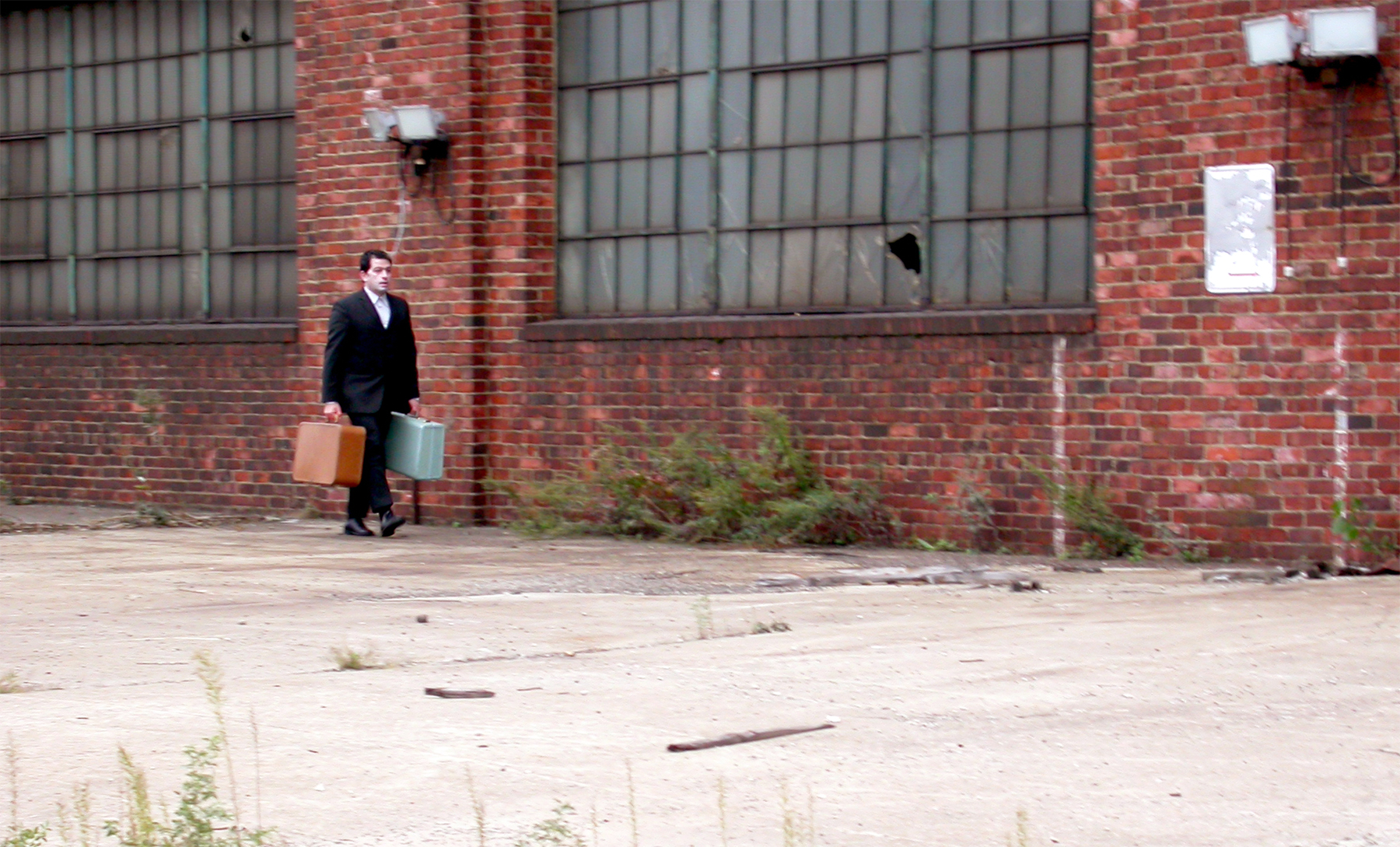
video still
Rockerfeller Boulevard, 2004
Shahram Entekhabi with Mieke Bal
PaL video, 04:22 min., Stereo, non-Dialogue
Rockefeller Boulevard is one of four videos in which Shahram Entekhabi collaborated with Mieke Bal. This collaboration between artist Shahram Entekhabi and cultural scientist Mieke Bal resulted in the creation of storytelling and cinematographic videos with a focus on the theme of "migration."
The character "Migrant" is introduced in the video "i?" (2004) and becomes a central element in Entekhabi's work. Through gestures and attire, Entekhabi embodies the character, referencing the "guest workers" group in Germany. The video combines humor, painting-influenced imagery, and cinematic traditions. The character's awkward movements and frozen expressions evoke slapstick comedy from the 1920s.
Entekhabi reflects on the evolving image of the guest worker and the complexities of self-perception. The video portrays the protagonist's discomfort in his homeland, exploring urban landscapes and abandoned structures. It symbolizes unattainable possibilities and the decline of industrialization. The artwork challenges viewers' desire for a coherent narrative, deconstructing itself through gaps and fragmented images.
Rockefeller Boulevard comments on electronic media dominance, migration culture, and the transformative potential of abandoned spaces. It strikes a delicate balance between narrative appeal and failure, interrupting events and colliding voices. The video invites reflection on the nature and impact of storytelling, industrial history, economic decline, and potential revitalization.
Cameras: Mieke Bal, Heather Fagan
Thanks to: Jessica Langley, Chelsea Meyers and John Orlock